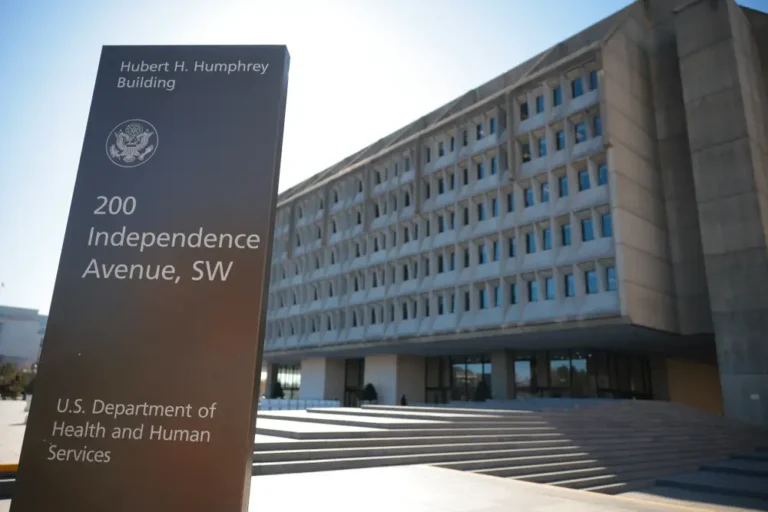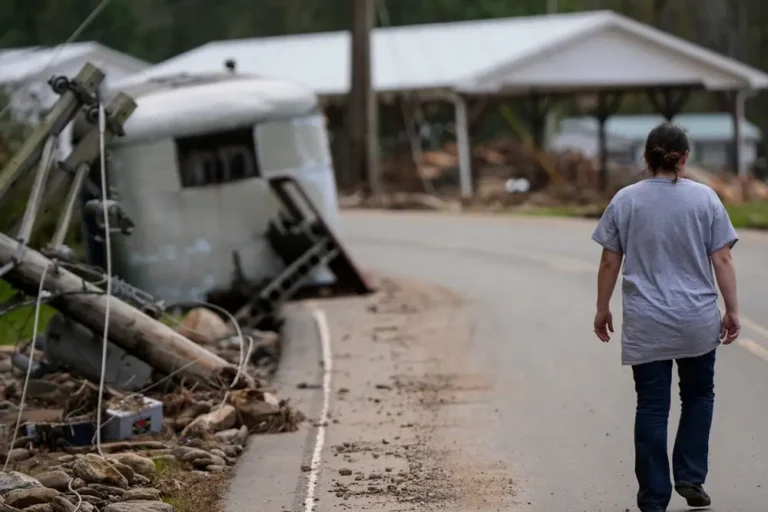Kamala Harris is going on the offensive on border security. It could keep Arizona blue and cut off Trump’s path to victory.

Vice President Kamala Harris is emphasizing her record as California attorney general to make her case for voters on border security.
Last Friday, Vice President Kamala Harris and her running mate, Minnesota Gov. Tim Walz, greeted a crowd of over 15,000 supporters in Glendale, Arizona, a suburb of Phoenix.
For the Democratic faithful in the Grand Canyon State, the high level of enthusiasm for their party’s presidential ticket is indicative of the political transformation that has occurred in state in recent years.
It’s also a stunning development in state where former President Donald Trump believes that the issue of immigration will not only rally his base but win over independents who have disapproved of President Joe Biden’s policies at the US-Mexico border.
For Harris, Biden’s decision to step aside as the Democratic nominee lets her tackle the issue on her own terms independent of the president.
And it’s a move that could give Harris a critical lift in a state that Trump is relying on to win back the White House.
Here’s a look at how Harris has gone on the offensive on border security and the dilemma Trump faces to win Arizona in November:
Getting ahead of the attacks
Immigration is a top issue for voters this fall, and it’s not just one that animates Republican voters. Over the past two years, voters in Democratic-heavy cities like New York and Chicago have seen an influx of migrants sent to their jurisdictions by Texas GOP Gov. Greg Abbott — who has long railed against the Biden administration’s policies at the southern border. It’s stoked huge divides even among residents in some of America’s most liberal cities.
Earlier in Biden’s term, record apprehensions at the southern border made immigration one of his weakest issues. When Biden took office, he pledged to foster a more humane approach regarding asylum seekers, but when Trump launched his 2024 bid, the president’s vulnerability on the issue was a major part of his pitch to voters.
Harris’ ascension as the presidential nominee scrambles this longstanding dynamic.
The former California attorney general is already running ads touting herself as a “border-state prosecutor” who went after drug cartels and put gang members in prison. And she zeroes in on her pledge to tackle human trafficking and the smuggling of fentanyl into the US.
Another Harris ad highlights the vice president’s support for adding additional border patrol agents at the southern border.
One critical thing that’s aiding Harris right now: border crossings have plummeted in recent months.
In July, roughly 57,000 migrants were apprehended at the southern border, the lowest monthly figure of Biden’s White House tenure. It’s a sharp decline from the 250,000 apprehensions in December 2023.
The Trump campaign has repeatedly criticized Harris over the issue and sought to tie her to Biden. Republicans frequently refer to the vice president as a “border czar” who didn’t secure the border.
But it is unclear if that message will resonate.
Harris was not officially designated by Biden as a “czar,” nor was she assigned the task of fully overseeing the southern border. She was, however, placed in charge of addressing the root causes of migration from Central America.
Trump can’t take Arizona for granted
Before Biden won Arizona in 2020, it last voted for a Democratic presidential nominee in 1996.
Since 1952, those were only two instances when the state voted blue at the presidential level, a reflection of its deep Republican roots.
Now, that conservative lean is no longer the default position.
Democrat Mark Kelly and Independent Kyrsten Sinema hold Arizona’s US Senate seats. After years of GOP control, Democrat Katie Hobbs wrestled back the Governor’s office in the 2022 midterms. And while the Arizona legislature remains controlled by Republicans, the party has narrow majorities in both the state House and state Senate.

Former President Donald Trump’s path back to the White House runs through Arizona.
Just two months ago, it appeared that Trump was on pace to win Arizona and potentially flip Nevada — a Democratic-leaning swing state that last backed a GOP presidential nominee in 2004. And his heavy focus on border security was a big part of his resonance with his base and a slice of voters who had grown disenchanted with Biden on immigration and the economy.
But the Cook Political Report recently shifted both Arizona and Nevada (as well as Georgia) from the “lean Republican” category back to the “tossup” column.
The movement comes off the strength of Harris’ campaign, as she has not only firmed up Democratic base support but made inroads with independents and undecided voters.
As of July, registered independents — or voters classified as “other” — make up nearly 34% of Arizona’s electorate. Republicans make up 35% of the electorate, while Democrats have a 29% share.
While Trump has enduring appeal with the Republican base, he can’t win based on those votes alone.
Harris’ campaign has already begun attacking Trump over his opposition to a bipartisan border security bill that was backed by Biden but largely abandoned by Republicans after the ex-president warned GOP lawmakers to oppose the measure.
Trump’s position has the potential to move independents who want an immigration solution and believe that Harris might take different approaches than Biden on the issue.
For Harris, remaining competitive in Arizona gives her multiple pathways to win in the fall. She is clearly eyeing the state’s 11 electoral votes, but she can still win the election without it.
However, for Trump, a Harris win in Arizona would be a huge blow in his attempts to win a second term. Biden’s 2020 victories in Arizona, Georgia, and Nevada — as well as his wins in Michigan, Pennsylvania, and Wisconsin — effectively cut off Trump’s path to victory that year.
Should Harris neutralize the border security issue — a feat that seemed unimaginable when Biden was still the presumptive nominee — it’ll give her a major opening to win Arizona.






